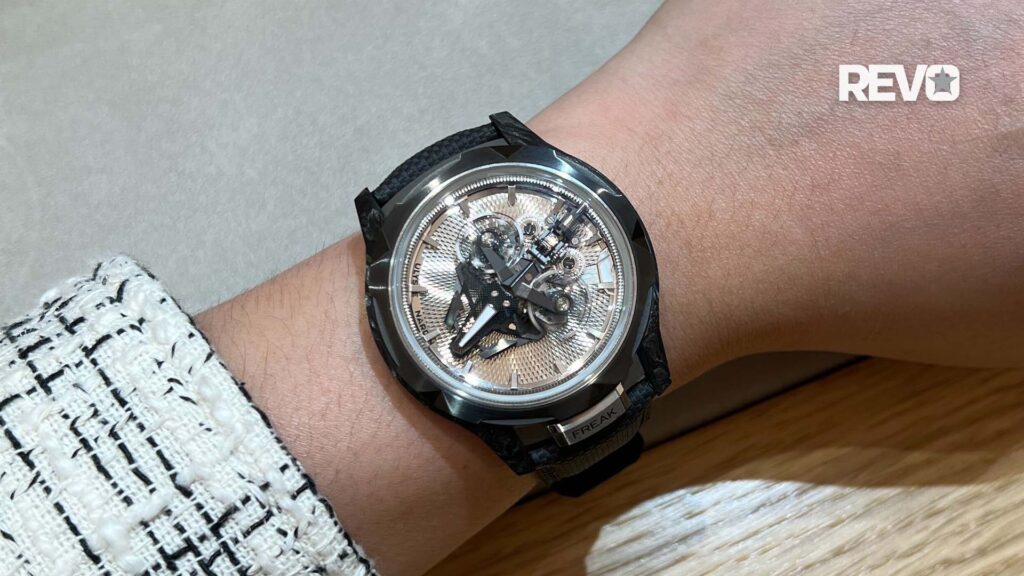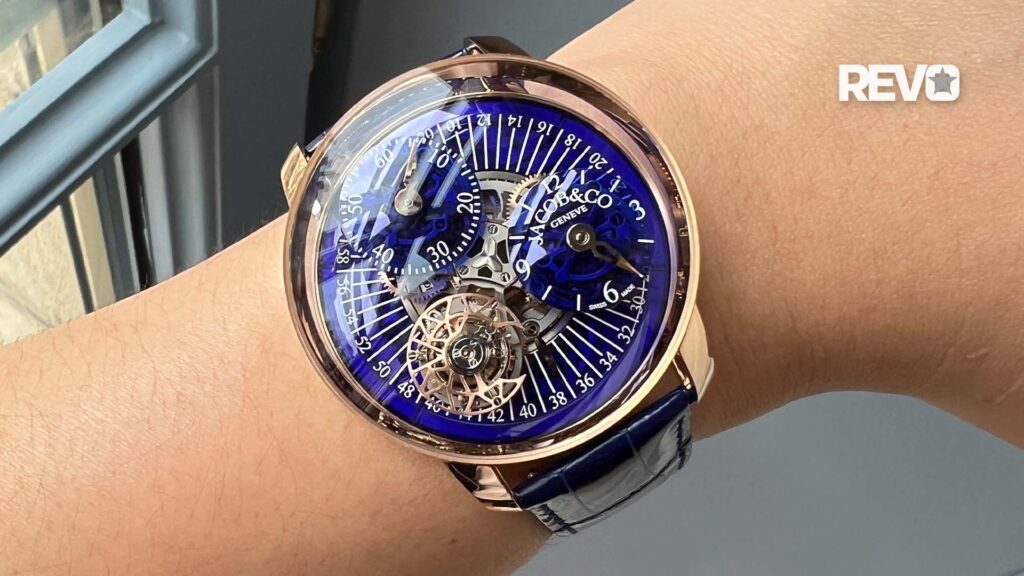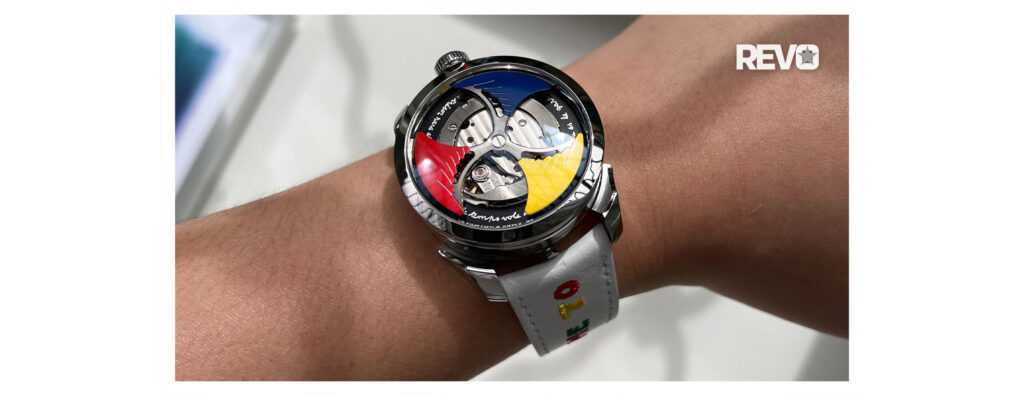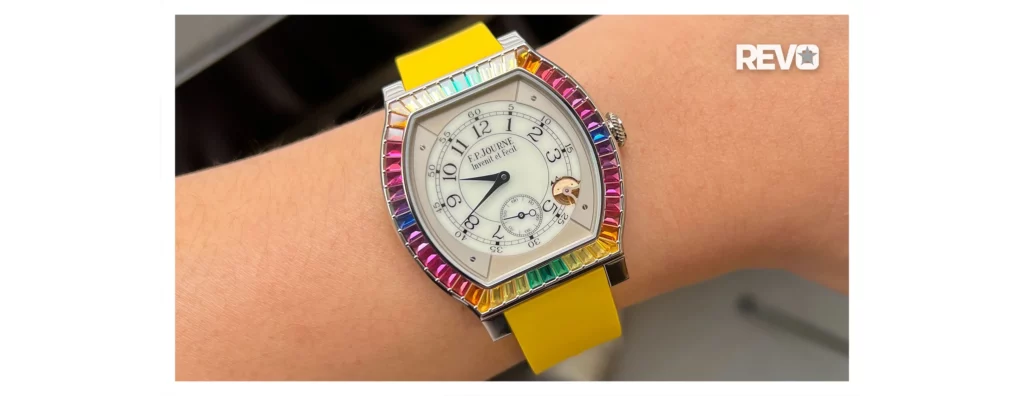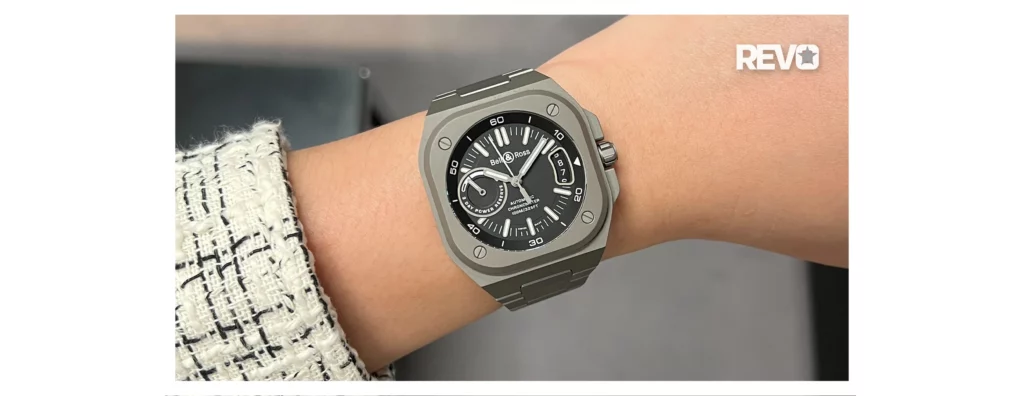Personalities
The Rolex King Midas: Worth its weight in Gold
The Resurgence of Rolex King Midas: Rediscovering the Underappreciated Gem of Rolex History
I was recently strolling down the Burlington Arcade, when my eye was caught by a watch in the window of George Somlo’s shop. Somlo is the only authorised dealer of vintage Omega, and has a strong line in vintage Cartier, Patek and 1960s/’70s Piaget…. But this was something I had not seen in a fashionable West End window, at least not for some years: a Rolex King Midas Cellini with gadrooned case and bracelet.
As a weathervane of tastes in vintage timepieces, Somlo is as good as any, and with West End rents being what they are, he’s not about to put dead merchandise in the window, ergo, this esoteric offering from the bowels of Rolex history must be enjoying a comeback and all I can do is ask why it took so long.
It is probably because the Rolex King Midas has been the black sheep of the family overlooked and underappreciated for at least a generation that I like it so much. Even people who claim to know Rolex well will tell you blithely that the only numbered and limited series that Rolex has ever done is the fabled ref. 5100 “Rolex Quartz” that made its debut in the 1970s. Whereas in truth, Rolex had issued a numbered and limited series of watches long before the first clouds of the looming Quartz Crisis had even begun to gather on the horizon. Although its distinctive design suggests the 1970s, the King Midas appeared in Rolex catalogs as early as 1962.

Nick Foulkes in an ensemble befitting the extravagant Rolex King MIdas (©Revolution)

Nick Foulkes’ own Rolex King MIdas Ref. 9630 (©Revolution)
The Bold Brilliance of Rolex King Midas: A Timepiece Ahead of its Time
One of the most daring pieces ever launched by Rolex, the King Midas was both far ahead and way behind its times, and so sui generis as to defy, or at least complicate, accurate description. As the name suggested, the watch was unabashed in its lavish use of 18K gold. Once worn, the Midas is impossible to forget; it weighs on the wrist like an 18K gold manacle rather than a watch. But there was much more to it than simply a large quantity of precious metal. The bracelet, composed of articulated ingots, was closer in appearance to the tracks of a tank than the conventional watch bracelet. The case and bracelet were not merely harmonious; it was impossible to tell where the head of the watch ended, and the bracelet began. Even in the 21st century, the King Midas looks idiosyncratic and unusual; in the early ’60s, it must have seemed like a UFO.
The Midas’s early adoption of the integrated case and bracelet design, along with the watch’s angular styling, has fueled speculation that Gérald Genta, who would become famous for integrated designs for both Patek Philippe and Audemars Piguet, was involved in the creation of the Rolex King Midas. Whatever the truth of this assertion, it was certainly a bravura exercise in detailed design: the winding crown with a sawtooth-style profile and the concealed clasp were not familiar from other models in the Rolex range. And just in case the wearer was unable to decipher the in Greek script on the dial, the angled case wall either side of the winding crown was deeply engraved with the words “Rolex King Midas.” Unlike later examples, the first series of the watch carried only the words “Rolex” and “.”
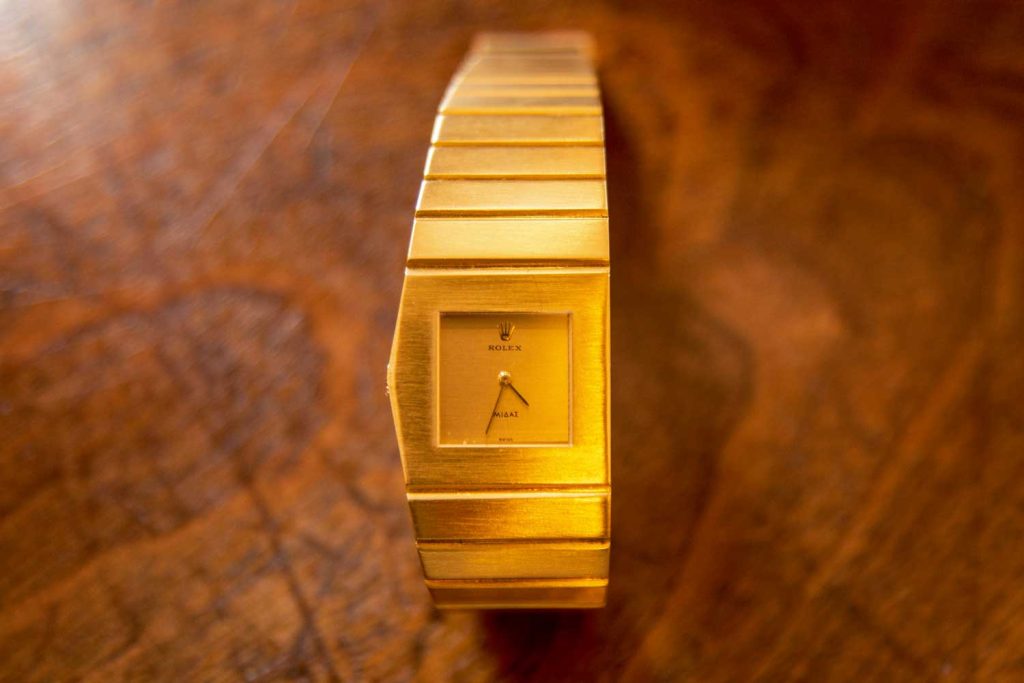
Nick Foulkes’ own Rolex King MIdas Ref. 9630 (©Revolution)
Rolex King Midas, a real masterpiece in gold
The key to understanding this watch lay in the name — using solid gold throughout, it was bruited about as the heaviest and most expensive men’s watch in production, not just at Rolex, but in the entire industry.
“Never before — a watch so daringly new, so outrageously different, so harmoniously classical. Named after the legendary king with the golden touch, sculptured from a block of solid 18ct gold, the King Midas is a watch designed for the most discriminating people in the world,” enthused an early advertisement. “Each watch is a wonderfully solid mass of gold, very, very heavy and… very, very expensive.”
“You may not be able to afford one, but you can’t afford not to see one. Come and daydream. See Midas. Touch Midas. A real masterpiece in gold, to which no illustration can do justice.”
It is, unarguably, an extreme expression of watchmaking. Nobody needed the Midas. But then nobody needed a watch that would work at the bottom of the Marianas Trench 11 kilometres under the waves; the point was that Rolex could, and dared, to make it. It is fascinating to think that at around the same time that Rolex was developing its very special Deepsea model with the hemispherical watch glass for the Trieste bathyscaphe excursion to the deepest point on the planet, it was also working on a watch that was almost the diametric opposite.
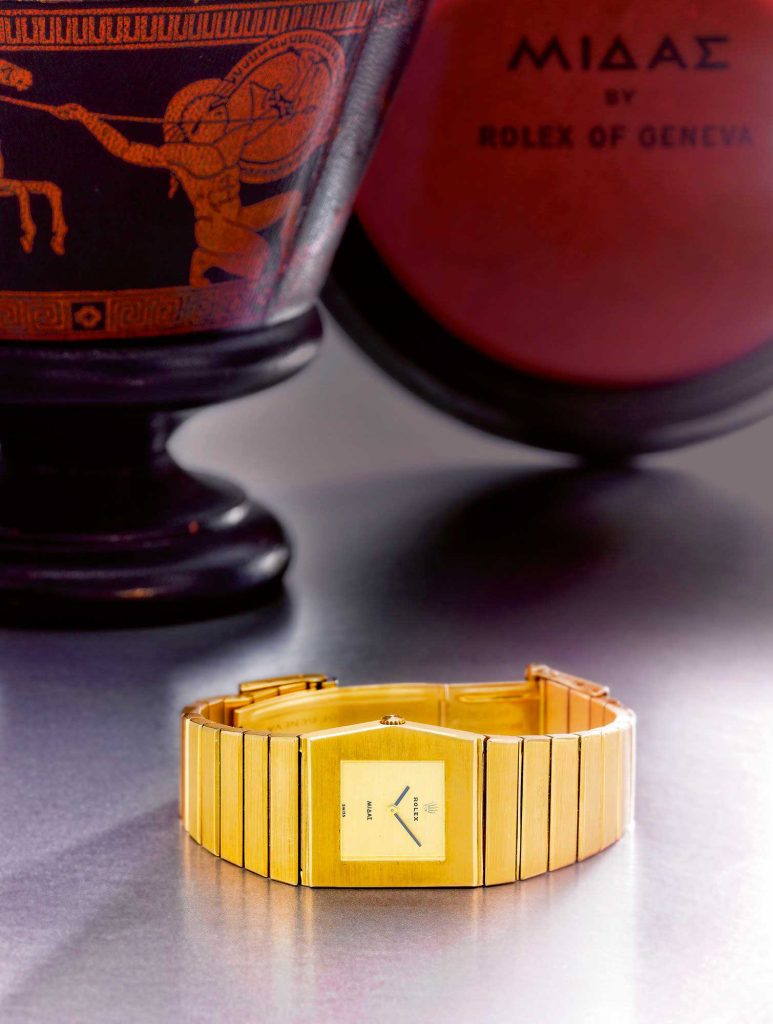
The Ref. 9630 is accompanied by a Rolex King Midas Urn inspired presentation box (Image: sothebys.com)
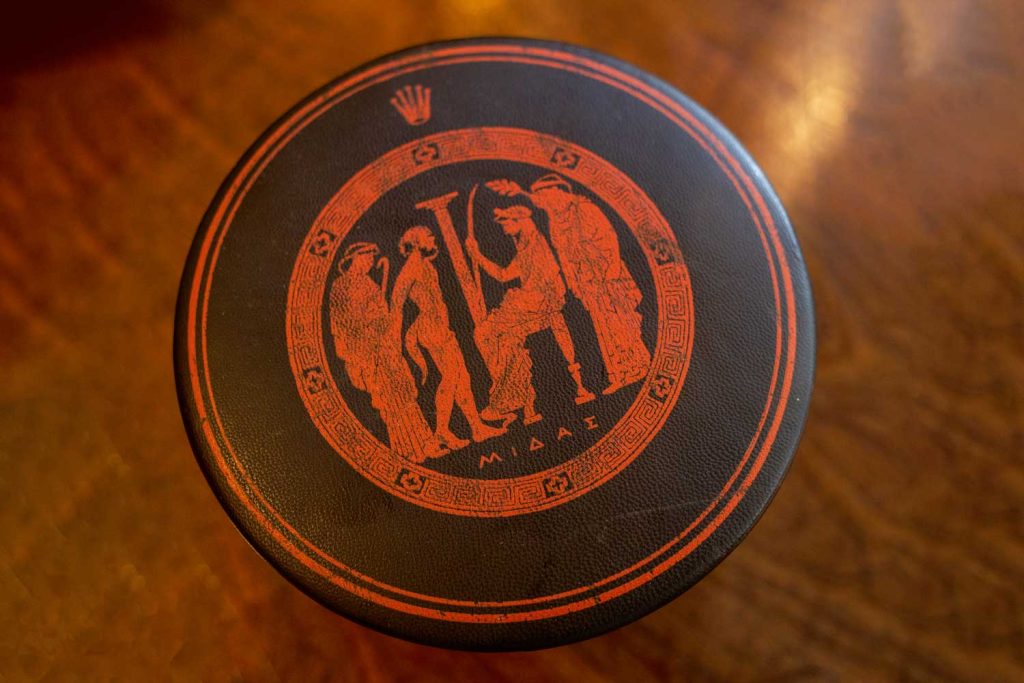
The urn-like box of the Rolex King Midas is a black box shaped like the mythical Midas stamnos, with scenes depicting Silenus led before Midas in red (©Revolution)
Rolex and the Avant-Garde ’60s
With the Midas, Rolex was responding to a new type of timepiece: in 1957, the family-owned firm of Piaget, which until the 1940s had been a supplier of movements, had launched a remarkable movement in the calibre 9P, an ultra-thin hand-wound movement of 2mm height that enabled the development of elegant dress wristwatches of avant-garde design, often using exotic stone dials. A new language of horological ornament had been invented and with the Midas, Rolex was to prove that it was fluent. And, highly unusually for Rolex, the King Midas ref. 9630 was limited to 1,000 pieces each with a number engraved on the underside of the bracelet close to the junction with the case.
Straight on one side and angled to a point on the other, when laid flat on its edge, it evokes the pediment and tympanum of a classical building. “We created this as a modern tribute to ancient Greece,” explained one advertisement. But anyone who had even just glimpsed the packaging would have been well aware of the debt to the ancient world.
The “box” was a true tour de force and a collectible on its own merits; ranking alongside the cork box housing the first Nautilus and the moon-cratered box in which the 1969 Omega Speedmaster Tribute to Apollo XI was presented. Like the watch inside, it was truly remarkable, taking as its inspiration a masterpiece of antiquity in the collection of the British Museum. The famed Midas stamnos, a lidded pottery vessel combining aspects of vase and amphora, was created around 440 BC, the black ground is decorated with red figures depicting Silenus led before Midas. The incident recorded on the two-and-a-half-millennia-old stamnos is the moment at which the satyr Silenus, found drunk by peasants, is brought before the Phrygian monarch Midas, who recognises him as the teacher of Dionysus and treats him honourably, extending several days of hospitality before returning him to Dionysus who, in thanks, grants Midas the famous touch that turns all to gold. This scene is reproduced on the lid of the chalice-shaped Rolex King Midas “stamnos” which is further printed with a battle scene from classical antiquity.

Elvis Presley is presented with the Rolex King Midas for his Houston Astrodome Livestock Show and Rodeo concerts. He’s seen here holding the urn-shaped box, with the watch seen on his left (Photo by Silver Screen Collection/Getty Images)
Rolex King Midas enjoyed a celebrity status
Only ever intended to be sold in small numbers and, as the advertising pointed out, priced to be beyond the means of all but the most plutocratic of customers (approximately 50 per cent higher than the previous prestige model, the Day-Date), the King Midas enjoyed celebrity status. Wearers included John Wayne and Elvis Presley, who was presented with a Midas engraved with the words, “To Elvis Presley from the Houston Livestock Show Officers 1970.”
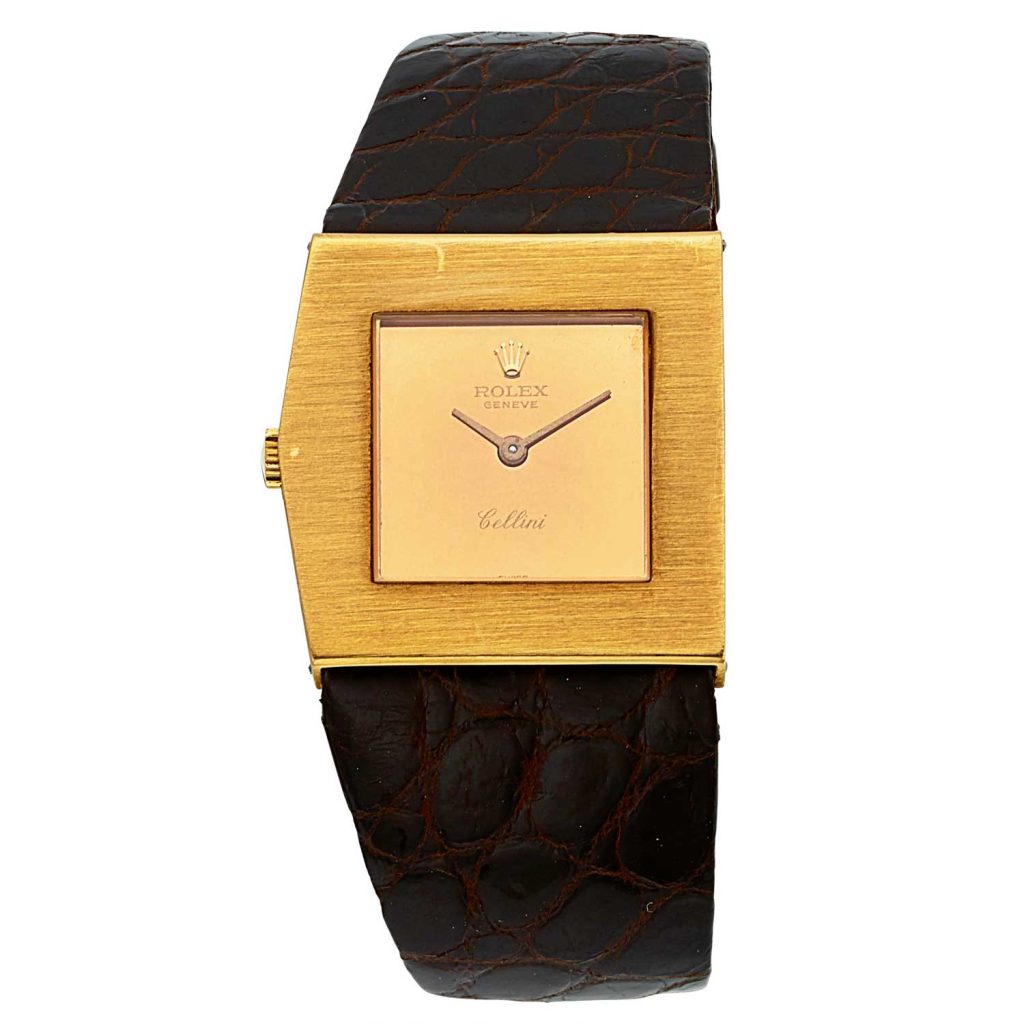
Ref. 4017 in gold with gold mirror dial, circa 1975
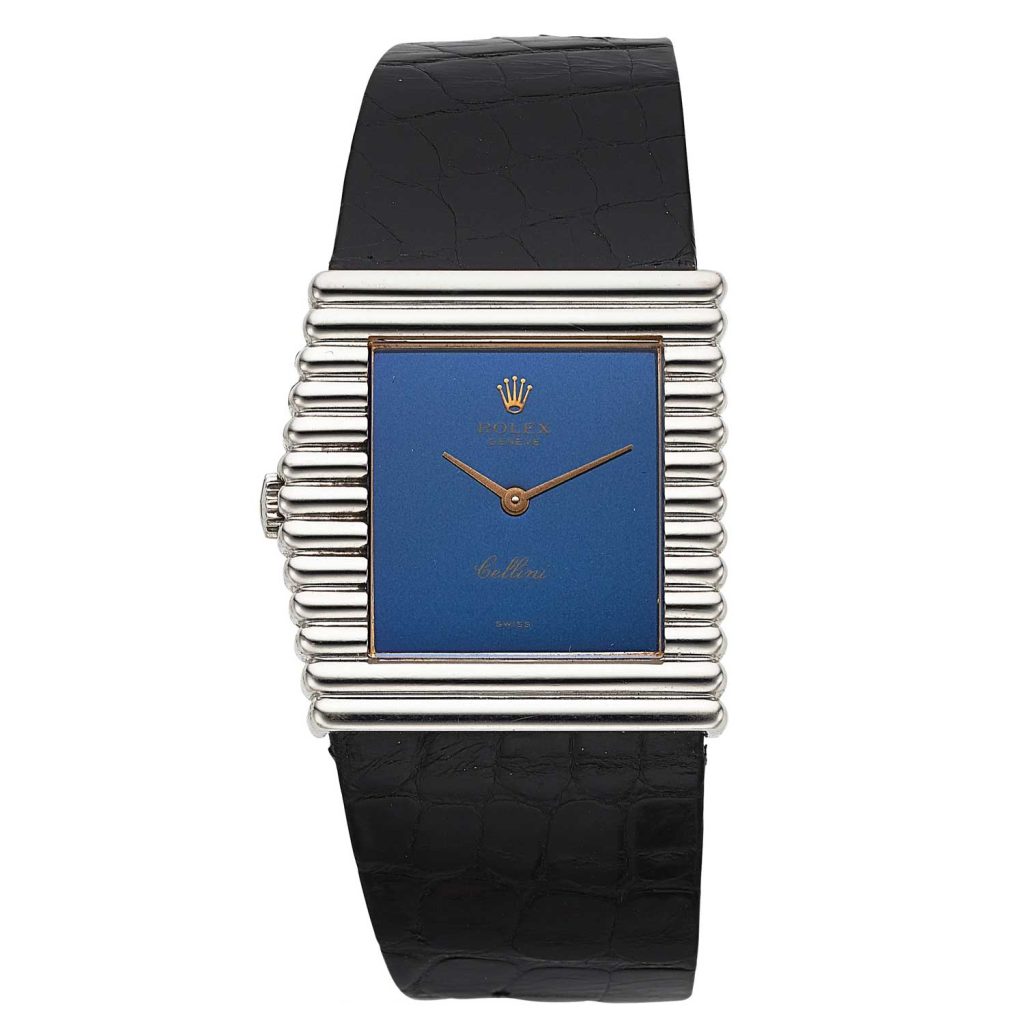
Ref. 4015 in white gold with fluted bezel and blue dial, circa 1976
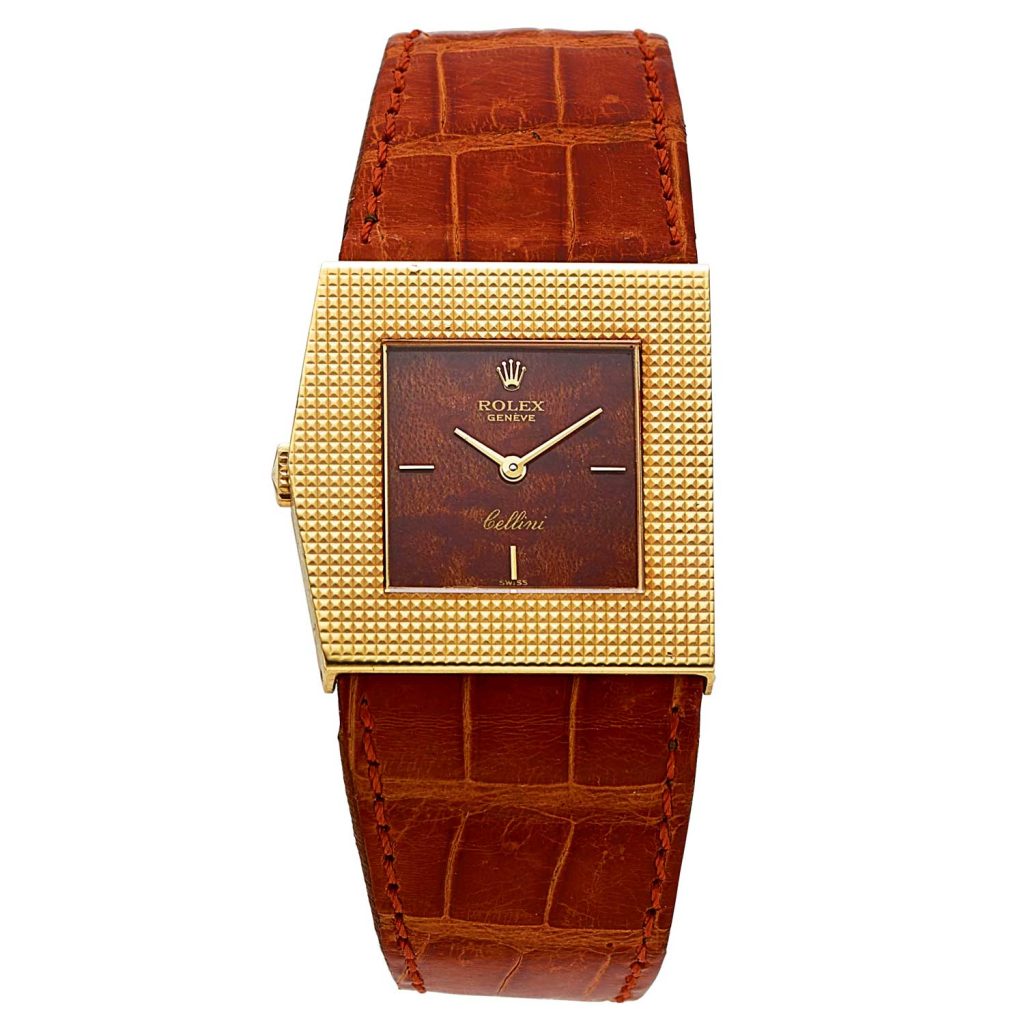
Ref. 4126 in yellow gold with hobnail-textured bezel and polished wood dial, circa 1981

Ref. 4315 in white gold, brushed, with a silver dial, circa 1975
The Evolution of King Midas: From Prominence to Cellini Signature
When the first “homage to Benvenuto Cellini” brochure appeared in 1964, the King Midas enjoyed a prominent position but the Midas did not become a Cellini-signed model until much later (the copperplate Cellini signature first appeared on watch dials in 1968). The ’70s was a particularly fecund era for the Cellini range — the King Midas was interpreted in a variety of different shapes and styles and became a pillar of this family of watches. The Midas name last appeared in the catalogue in the early 21st century, by which time the all-gold original had been replaced by the “Cellini Midas-First” on crocodile strap.
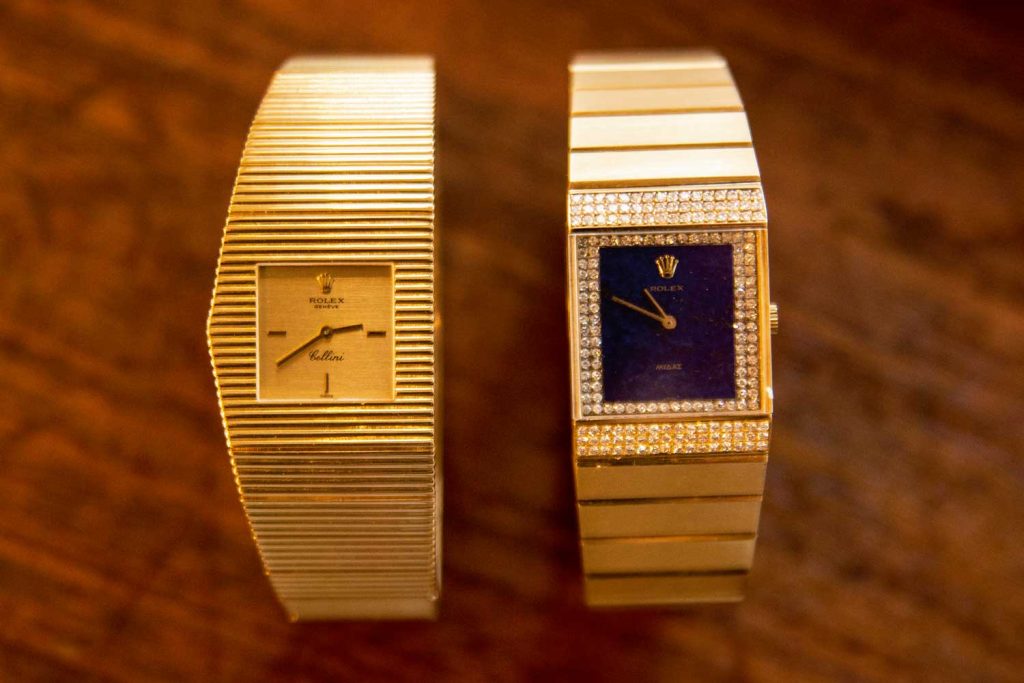
Later versions of the King Midas lost the asymmetrical case design, like the Ref. 4611 (right) in yellow gold with lapis lazuli dial (©Revolution)
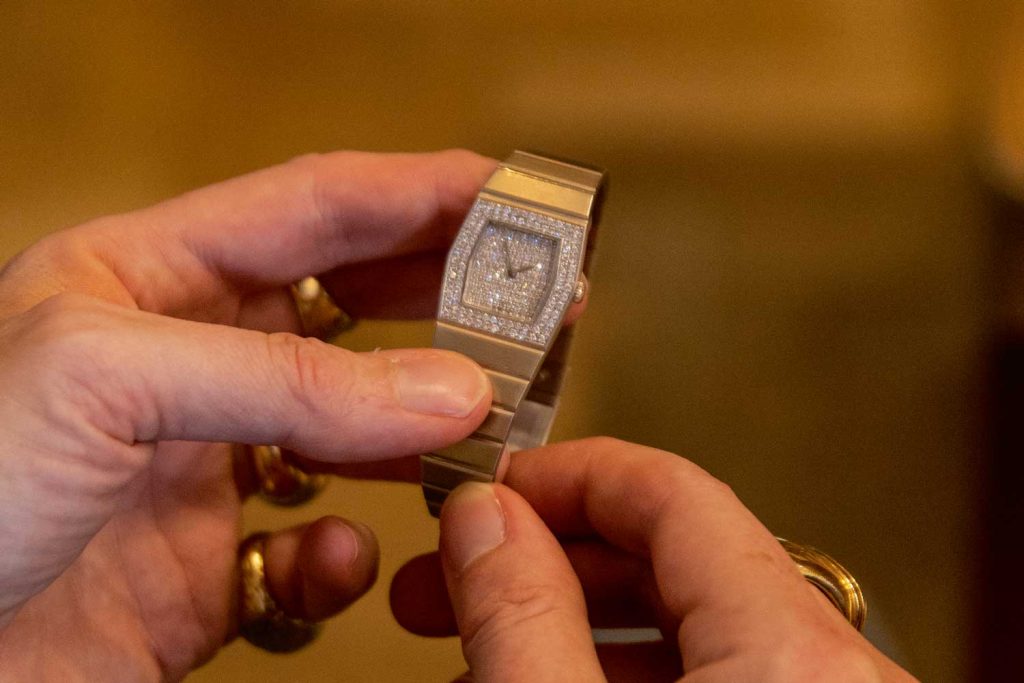
Smaller versions were made for women as well, like this Queen Midas with paved diamond dial and bezel (©Revolution)
It may be hoping for too much to think that Rolex will ever relaunch the King Midas but I would like to think Rolex collectors will look on it with increasing respect.




